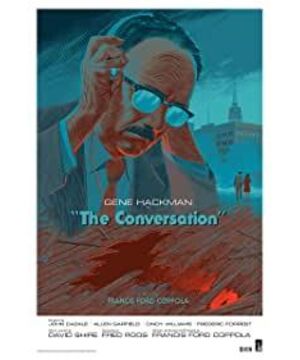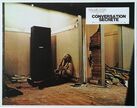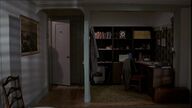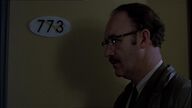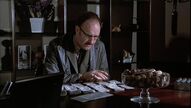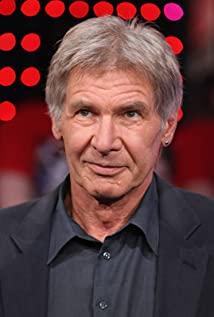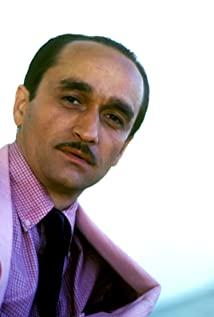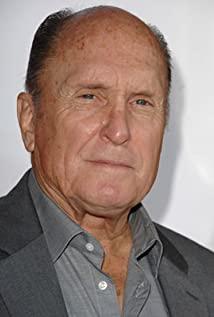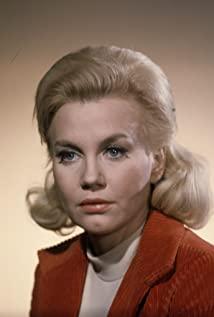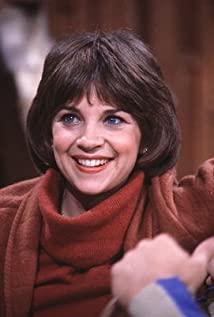In the opening, a three-minute long-range overhead shot was taken. The focal length was gradually retracted and the lens moved up and down to pull the male lead into the screen; at the same time, the background sound was filled with the sometimes steady and chaotic saxophone and singing voices. Coppola uses a three-minute God-perspective spatial movement and unclear source sounds and their ambiguous sound quality, so that "surveillance" and its sisters "eavesdrop" into the audience's plot cognition.
At the end, Coppola shifted the camera to the left and right in a semicircular motion, sweeping back and forth across the apartment that was demolished by the male protagonist, just like after the end of the day, while the male protagonist sits in the corner of the apartment and blows the saxophone with seemingly weak force. . If the opening shots in the square following the footsteps of the male protagonist move up and down, indicating that the male protagonist is in a fluid environment and has the master control (monitor), then the ending camera is limited to pan left and right indoors and the male protagonist has nothing else. The sitting down of the law shows that the male protagonist has become a delineated object (monitored person) that cannot find an exit. In the end, there is only the saxophone like the dog of the killed director-loyal, but tired and embarrassed.
"The Eavesdropping Conspiracy" is director Coppola's Oscar nominee again after "The Godfather", and it is also the winner of the Palme d'Or for the best film in Cannes that year. The film was brewed after the Watergate Incident in American politics. It mainly tells the private investigator Harry who was accidentally involved in a murder conspiracy while monitoring in a recent case, and finally he became the subject of monitoring. Harry changed from being a professional monitor to being monitored and unable to do anything. This is exactly the problem the director Coppola tried to raise. People who seem to be unsurveilled or impossible to be monitored are actually not the only ones. Surveillance/ Listening and being monitored/listening have become a normal life in the current technological society. Going back to the opening scene, when the lens zoomed in, the first person who came out of the crowd was not the male protagonist who was monitoring/listening, but a mime actor improvising and imitating in the square. Following his steps, the hero Harry slowly appeared in the camera's sight from the corner, while the mime actor was imitating Harry who was drinking coffee. The emergence of mime actors is guided. On the one hand, the male lead is allowed to enter and exit the scene. On the other hand, the behavior of the mime actor itself is an alternative language set by the director here, that is, action imitation ≈ monitoring/listening. Both are a copy of behavior, but one is instantaneous and the other is intertemporal. The mime actor's imitation of Harry implies or foretells that Harry has entered the surveillance/listening zone. So then we saw that after Harry returned home from work, he found that his three-locked door was opened by the landlord, and his private phone number and birthday date that he had never mentioned to anyone were also known to the landlord.
In Antonio's 1962 film "Zoom", he used the mime actor as a leading opening for the first time, but Antonio used the most primitive attribute of the mime actor-"play". The opening play of the mime actor in "Zoom" and the whole film form a play in play. Through this play in play, the director cleverly throws out the theme of the film-about reality.
In many comparisons between the two films, what everyone mentioned is the similarity of the protagonist’s work behavior. A corpse in a murder case; and in "Eavesdropping", the male protagonist learns of an impending murder by constantly listening to the recording.
In "The Great Conspiracy of Eavesdropping," Coppola cleverly borrowed the mime actors in Antonioni's "Zoom" to predict the protagonist's situation. In addition, he also used to pay tribute to the bathroom murder in the Hitchcock film "The Cry" Bridge section to show Harry's mental state. In the film, Harry learns of the hotel room where the murder will take place and rushes to the hotel to book a room next door for observation. Harry witnessed the murder on the balcony of the hotel room, but he did not rescue or intervene. Afterwards, Harry went to the room where the murder occurred to check. This kind of inaction on the murder but paying attention to the traces of the crime shows that Harry is not interested in the murder itself, and he is interested in him as a witness in the murder. This is his professional mentality or inertia as a private investigator-investigation, evidence, presentation.
Harry walked into the bathroom, opened the shower curtain, and checked the bathtub sink. This scene has a very typical Hitchcock-style horror, a strongly suggestive psychological dialogue going on. On the one hand, this kind of dialogue is on the external level of the film. The director hints to the audience that there may be bloodstains of the victim through the imitation of "Scary"; on the other hand, it is Harry's inner self in the time and space of the story. Suggestion-this may be the murder scene, and the source of the suggestion is "The Terror".
After the bathtub check failed, Harry seemed to realize no, we were not at the scene of "Cry", so he returned to the bathroom again and focused his attention on the bathroom toilet. When he pressed the flush button, large swaths of blood flowed back from the toilet and spilled onto the bathroom floor. Zizek said when commenting on Hitchcock's film that things like sewers are called the dark world in phenomenology, and they are another chaotic and primitive reality. When we flush the dirt into the sewers, it is a kind of stain cleanup. This cleanup can effectively contain the chaotic dark world and prevent it from erupting and engulfing us at any time. So we saw that after the murder in the bathroom of "Victorious", the director spent about ten minutes to show in detail how the murderer cleaned the scene.
The backflow of blood and water shown in "The Great Conspiracy of Eavesdropping" is exactly the opposite of the blemish cleanup theory, which indicates the arrival of a disordered and chaotic dark world. So immediately Harry discovered that the girl he was trying to protect was not actually the victim but the perpetrator. Before that, Harry had a strong moral sway with surveillance/listening because of his work that might hurt the girl. In the end, this dislocation of the actual result of the desired result caused Harry a strong crisis of psychological belief. This kind of crisis broke out completely when he learned that he was being watched/listened but was unable to resist. Suddenly, Harry's beliefs collapsed.
The apartment that was demolished to resemble the end of the day in the final scene is a true response to this collapse.
View more about The Conversation reviews


